
Peromyscus is a genus of rodents. They are commonly referred to as deer mice or deermice, not to be confused with the chevrotain or "mouse deer". They are New World mice only distantly related to the common house and laboratory mouse, Mus musculus. From this relative, Peromyscus species are distinguished by relatively larger eyes, and also often two-tone coloring, with darker colors over the dorsum (back), and white abdominal and limb hair-coloring. In reference to the coloring, the word Peromyscus comes from Greek words meaning "booted mouse". They are also accomplished jumpers and runners by comparison to house mice, and their common name of "deer mouse" is in reference to this agility.
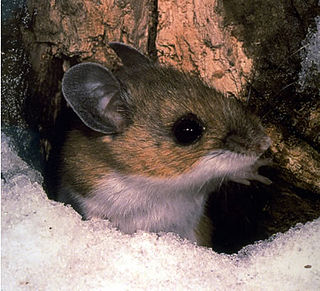
The Neotominae are a subfamily of the family Cricetidae. They consist of four tribes, 16 genera, and many species of New World rats and mice, predominantly found in North America. Among them are the well-known deer mice, white-footed mice, packrats, and grasshopper mice.

The pinyon mouse is native to the southwestern United States and Baja California in Mexico. These medium-sized mice are often distinguished by their relatively large ears. The range of this species extends from southern Oregon and Wyoming in the north, and extends south to roughly the U.S.-Mexico border, with a disjunct population known as the Palo Duro mouse that occupies an area in the vicinity of Palo Duro Canyon in the Texas panhandle.
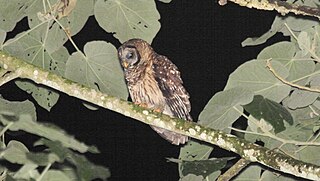
The fulvous owl, or Guatemala barred owl, is a resident of the cloud forests of Central America. A medium-sized true owl, it has a round head, lacking ear tufts. Typical coloration is warm dark brown or reddish brown on the back and lighter brown on the front with darker barring. Adults weigh approximately 600 grams (21 oz), with females being heavier. Its distribution is limited to highland regions of Guatemala, Honduras, and El Salvador. It inhabits elevations from 1,200 to 3,100 meters, and is fairly common within its range. Its behavior is poorly known, as are its population size and distribution. It is classified as a species of least concern by the International Union for Conservation of Nature, although it is considered endangered in Mexico.

The Zacatecan deer mouse or southern rock mouse is a species of rodent in the family Cricetidae. It is found only in Mexico, and is not considered endangered.

The cactus mouse is a species of rodent in the family Cricetidae. It is a species of the genus Peromyscus, a closely related group of New World mice often called "deermice". They are native to desert areas of southwestern North America.
The blackish deer mouse is a species of rodent in the family Cricetidae found only in Mexico, and is relatively poorly studied.
The naked-eared deer mouse is a species of rodent in the family Cricetidae. It is found in El Salvador, Guatemala, Honduras, Mexico, and Nicaragua.
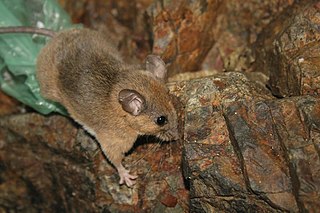
The Tres Marías island mouse or Tres Marías deer mouse is a species of rodent in the family Cricetidae. It is found only on the Islas Marías off the west coast of Mexico. When last assessed, it was common on María Cleofás Island, but rare or absent on the other, more disturbed, islands.

The black-eared mouse, or black-eared deer mouse, is a species of rodent in the family Cricetidae, native to North America.

The Mexican deer mouse is a species of forest-dwelling rodent in the family Cricetidae. It is found in southern Mexico and throughout much of Central America.
The tawny deer mouse or marsh mouse is a species of rodent in the family Cricetidae. It is found only in Mexico.
The false canyon mouse or Coronados deer mouse, is a species of rodent in the family Cricetidae. It is known only from Coronados Island, a small island in the Gulf of California, part of Baja California Sur, Mexico. The species is threatened by predation by feral cats, and the IUCN has assessed its conservation status as "critically endangered".
The painted spiny pocket mouse is a species of rodent in the family Heteromyidae. It is found in Mexico and the northern tip of Guatemala. It was formerly placed in the genus Liomys, which is now recognized to be paraphyletic and has been subsumed into Heteromys.
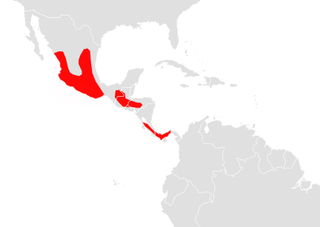
The Aztec fruit-eating bat is a species of bat in the family Phyllostomidae.
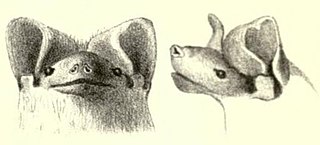
The Aztec mastiff bat is a species of bat in the family Molossidae. It is insectivorous.
The Orizaba deer mouse is a small species of rodent in the family Cricetidae, native to El Salvador, Guatemala, Honduras, and Mexico. It is found in thorn scrub and favors rocky areas with brush and scattered trees. They are nocturnal, and have been discovered to feed on arthropods, seeds, and green plant material. Breeding takes place year-round, and the mean litter size is two to three young in Oaxaca, Mexico. It is known to be a terrestrial animal.













